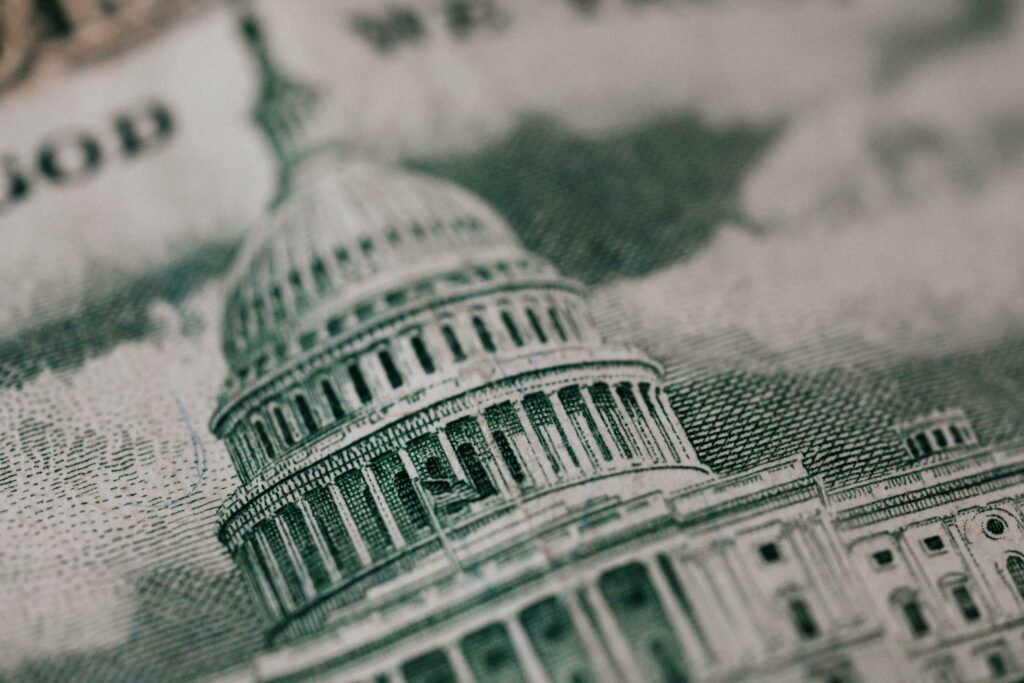Unpacking How the Bipartisan Tax Package Could Transform the U.S. Economy in 2024

The new year has brought a major breakthrough in the U.S. Congress, as senior lawmakers from both parties have agreed on a sweeping tax package that could reshape the economic landscape of the country. The tax package aims to provide relief for families, boost innovation and competitiveness in key industries, and support the transition to a clean energy economy. The package is still pending final approval, but it has already generated a lot of excitement and anticipation among various stakeholders.
What’s in the Tax Package?
The tax package consists of two main components: an expansion of the child tax credit and a revival of several business tax breaks, known as tax extenders. These are some of the highlights of the package:
Child Tax Credit: The package would increase the maximum refundable amount per child to $1,800 in 2023, $1,900 in 2024, and $2,000 in 2025, and adjust it for inflation thereafter. It would also allow taxpayers to use their prior year’s earned income to calculate their credit if it is higher than their current year’s income. This would benefit about 16 million children in low-income families, lifting as many as 400,000 of them out of poverty.
Tax Extenders: The package would extend and enhance several tax incentives for businesses, such as:
- Work Opportunity Tax Credit: This credit rewards employers for hiring workers from disadvantaged groups, such as veterans and long-term unemployed.
- Employer Credit for Paid Family and Medical Leave: This credit encourages employers to offer paid leave to their employees for qualifying events, such as childbirth or serious illness.
- New Markets Tax Credit: This credit stimulates investments in low-income communities, creating jobs and economic opportunities.
- Renewable Energy Tax Credits: These credits promote the development and deployment of wind, solar, and geothermal energy sources, reducing greenhouse gas emissions and enhancing energy security.
- Energy-Efficient Commercial Buildings Deduction: This deduction incentivizes the installation of energy-efficient systems in commercial buildings, saving energy and money.
In addition to these tax extenders, the package also introduces two new tax credits to spur domestic manufacturing in advanced technologies and green energy components:
- Advanced Manufacturing Investment (AMI) Credit: This credit, based on the CHIPS Act of 2021, offers a 25% refundable benefit for investments in semiconductor and other high-tech production facilities and equipment, from 2022 to 2026. This credit aims to strengthen the U.S. leadership and competitiveness in the global semiconductor industry, which is vital for innovation and national security.
- Advanced Manufacturing Production (AMP) Credit: This credit, based on the Inflation Reduction Act of 2021, focuses on domestic production of solar, wind, battery components, and critical minerals, from 2022 to 2032. This credit supports the U.S. transition to a clean energy economy, creating jobs and reducing dependence on foreign sources.
Who Stands to Gain from the Tax Package?
The tax package has different implications for different sectors of the economy, but some of the most likely beneficiaries are:
- Technology: The technology sector is poised for a significant boost, especially with the AMI credit enhancing the semiconductor industry and renewable energy tax credits fostering clean energy technologies. These tax incentives could spur innovation and growth in areas such as artificial intelligence, biotechnology, cybersecurity, and telecommunications.
- Manufacturing: The manufacturing sector is likely to experience a surge in competitiveness and innovation, courtesy of the AMI and AMP credits. These credits could help revitalize the U.S. manufacturing base, create high-quality jobs, and increase exports.
- Biotechnology: The biotechnology sector stands to benefit from the AMI credit in bolstering the production of biotech products, such as vaccines, diagnostics, and therapeutics. The sector could also benefit from supportive measures for workforce retention, such as the work opportunity tax credit and the employer credit for paid family and medical leave.
- Healthcare: The healthcare sector is set to gain from measures easing the burden on healthcare workers, such as the employer credit for paid family and medical leave and the work opportunity tax credit. The sector could also benefit from promoting environmentally sustainable practices in healthcare facilities, such as the energy-efficient commercial buildings deduction.
- Financial Services and Banking: The financial services and banking sector is poised to expand its footprint in low-income communities and green financing, leveraging the new markets and renewable energy tax credits. These credits could enable the sector to provide more capital and services to underserved areas and support the development of clean energy projects.
What’s Next for the Tax Package?
The bipartisan tax package marks a pivotal moment in American economic policy. Its potential to catalyze growth and innovation across key sectors – technology, manufacturing, biotech, healthcare, and finance – is immense. While the legislative journey is still underway, the optimism and opportunities it presents are undeniable. This tax reform could be a cornerstone in shaping a more robust and sustainable economic future for the U.S.
Sources:
- Congress unveils bipartisan tax deal ahead of shutdown deadline | MSN
- New bipartisan proposal to enhance the Child Tax Credit: What to know | ABC News
- What Is the CHIPS and Science Act of 2022? | Investopedia
- Inflation Reduction Act Guidebook | The White House
- The Tax Relief for American Families and Workers Act of 2024 | The United States Senate Committee on Finance
- Inflation Reduction Act – Wikipedia
